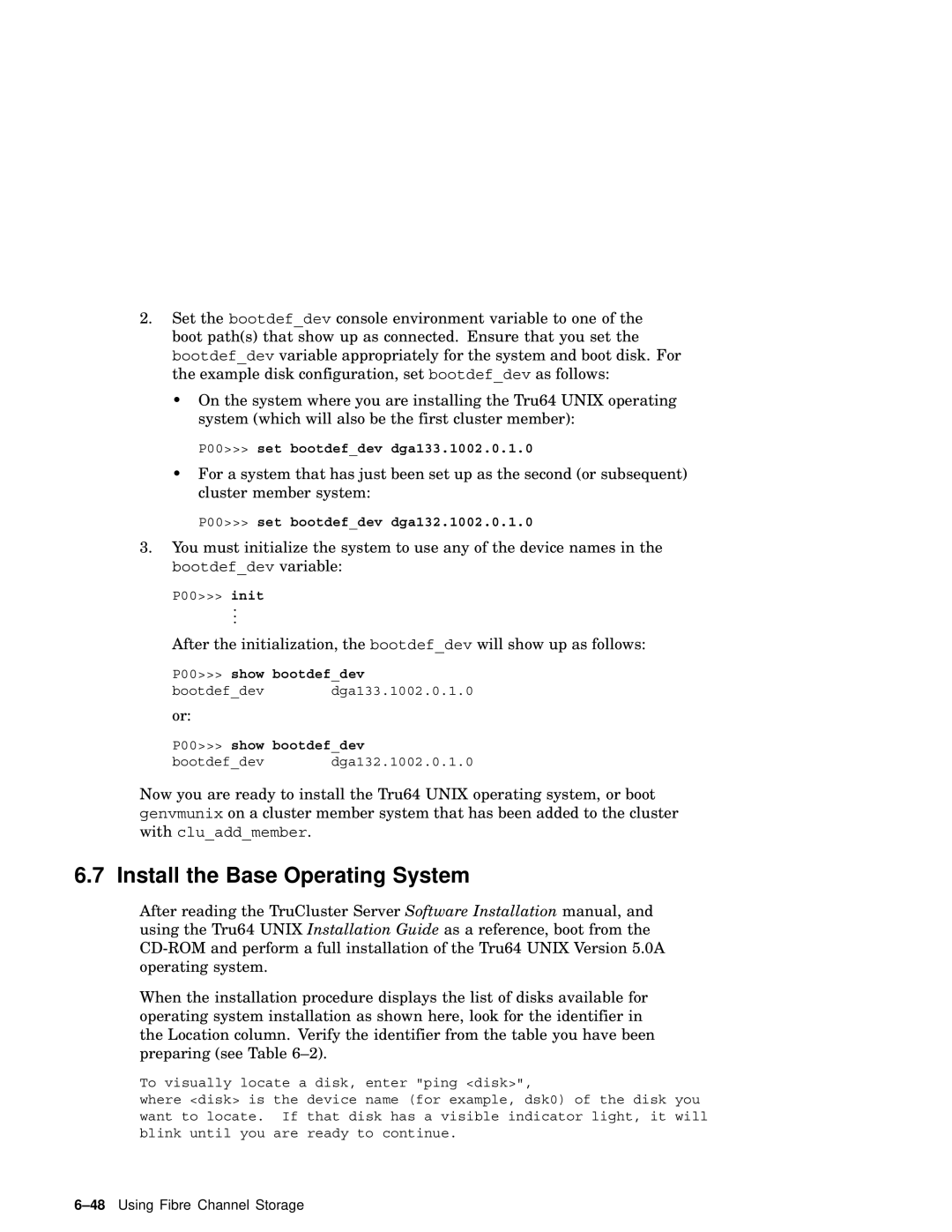2.Set the bootdef_dev console environment variable to one of the boot path(s) that show up as connected. Ensure that you set the bootdef_dev variable appropriately for the system and boot disk. For the example disk configuration, set bootdef_dev as follows:
•On the system where you are installing the Tru64 UNIX operating system (which will also be the first cluster member):
P00>>> set bootdef_dev dga133.1002.0.1.0
•For a system that has just been set up as the second (or subsequent) cluster member system:
P00>>> set bootdef_dev dga132.1002.0.1.0
3.You must initialize the system to use any of the device names in the bootdef_dev variable:
P00>>> init
.
.
.
After the initialization, the bootdef_dev will show up as follows:
P00>>> show bootdef_dev
bootdef_dev dga133.1002.0.1.0
or:
P00>>> show bootdef_dev
bootdef_dev dga132.1002.0.1.0
Now you are ready to install the Tru64 UNIX operating system, or boot genvmunix on a cluster member system that has been added to the cluster with clu_add_member.
6.7 Install the Base Operating System
After reading the TruCluster Server Software Installation manual, and using the Tru64 UNIX Installation Guide as a reference, boot from the
When the installation procedure displays the list of disks available for operating system installation as shown here, look for the identifier in the Location column. Verify the identifier from the table you have been preparing (see Table
To visually locate a disk, enter "ping <disk>",
where <disk> is the device name (for example, dsk0) of the disk you want to locate. If that disk has a visible indicator light, it will blink until you are ready to continue.
